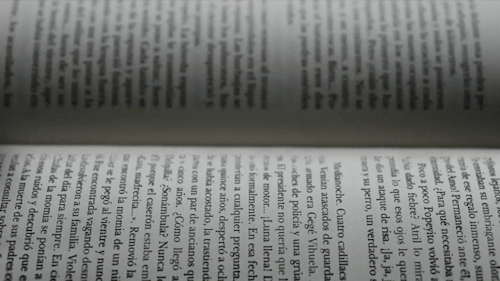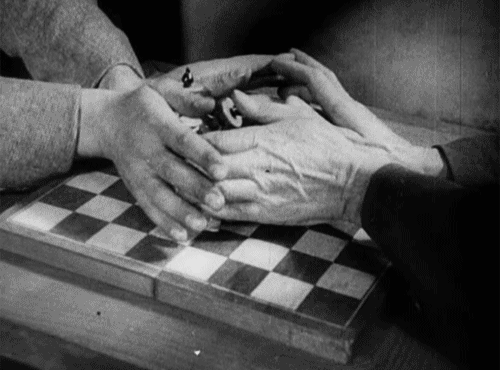How To Organise A Grimoire
How to organise a grimoire
This is how I've decided to organise my grimoire now that I'm digitising it. I thought this may be of some benefit to other autistic/dyslexic practioners by sharing how my brain likes to formulate things. The trick is to categorise.
I have one large category I'm calling the chapter and every chapter has a number of categories within it and smaller sub categories underneath each one.
So my brain basically works like a russian nesting doll or like a very messy spider diagram. Organising it this way helps me to stay on track and stops me from getting overwhelmed. (I used this method in all my university essays and it helped push my grade up a lot).
I'm not writing it in any specific order but here's a list of what I've completed so far. Please feel free to take any of these. I hope this helps you with your own grimoire writing.
Theory 📚
Terminology
Paganism: historical context. Modern context. Core values.
New Age Spirituality: Development. Capitalism. Modern Example.
Cultural Appropriation: What it is. How it happens. How to avoid it. List of closed practices and red flags.
Wicca: What it is. How it's practiced. Gerald Gardner. Criticisms.
Thelema: Aleister Crowley. Development (egyptomania). Criticisms.
Conspiracy Theories: Development (root cause). Dangers. Examples. List of spiritual conspiracies. List of antisemitic stereotypes and propaganda.
Cults: What are they. How are they dangerous. How to recognise one (B.I.T.E model). List of religious/spiritual cults.
Satanic Panic: Historical development to our current satanic panic. The 1980's moral panic. Christian persecution complex.
KJV: Who was King James. The creation of the KJV. The KJO movement (evangelical and Christian fundamentalism. American Folk magic)
Witches in context: The modern witch. The post-modern witch. Historical context (England. Ancient Greece. Ireland).
Cats in context: Modern context. Familiars. Historical context (Egypt. Greece. China. England).
Transphobia: the idea behind terfism. How to recognise a terf. Examples of Terfism in spirituality (Lister). Dispelling myths and Misinformation.
Queerness: Erasure and queerphobia. Why queer people gravitate to witchcraft/paganism/Wicca. Examples (intersex. Gay relationships. Lesbian relationships. Asexuality).
Practical Basics 🔮
Terminology
Health and Safety: Fire. Smoke. Essential Oils. Toxicity. Wound Care. Biohazards.
How to make a magical space: What they are. Different types. Tools and their uses.
Grimoire/Book of Shadows: What they are. The differences. Different Formats. The Front cover.
Cleansing: What it is. What its used for. Examples.
Grounding: What it is. What its used for. Examples.
Protection: What it is. What its used for. Examples.
Intuition: What it is. What its used for. Developing it. Examples.
Discernment: What it is. What its used for. Steps of discernment (from a Christian perspective. From a secular perspective). Psychosis.
The Year and the holidays: Samhain. Yule. Wassailing. Imbolc. Spring Equinox. Beltaine. Summer Solstice. Lughnasadh. Autumn Equinox. (Historical development. How they're celebrated).
Deity Worship: Scientific Context (Neuroscience of Religiosity). Spiritual Context. Worship Vs working with. Finding a deity. Your religious rights. Critiquing your religious path. For example ↓
Hellenism: Historical context (Wars. Colonisation. Slavery. Citizenship. Pederasty). Modern Context (White washing. Transphobia).
Your Deities (if you choose to have any): Iconography. Mythology. Associations. Offerings.
Spirits: Ghosts. Shadow people. Demons (what they are. fear and labelling. History Vs pop culture). The Warrens (history. Criticisms). Other folklore.
Practical Magic ✨
I have a lot more planned for this section.
Terminology
Divination: What it is. What its used for. List of types and tools. For example ↓
Tarot: Structure of the tarot deck. Historical context. Modern Context. The fool and you.
Basic Astrology: What it is. Historical Context. Signs. Planets. Houses. Reading a natal chart.
Colour Magic: Basic colour theory. Symbolism. Practical application.
Correspondence 🌿
When there's a long list of items and spiritual meanings/applications I keep it in this section at the back of my grimoire.
Colours
Symbols
The Classic Elements
Astrology
Stones
Herbs and Spices (kitchen cupboard specific)
Common plants in your area (invasive and non invasive)
Seasonal fruit and vegetables
Miscellaneous laws and philosophies
-
 doppelbodt liked this · 1 year ago
doppelbodt liked this · 1 year ago -
 cephaandrius liked this · 1 year ago
cephaandrius liked this · 1 year ago -
 smithingwitch liked this · 1 year ago
smithingwitch liked this · 1 year ago -
 spirits-child liked this · 1 year ago
spirits-child liked this · 1 year ago -
 quinn-the-brain liked this · 1 year ago
quinn-the-brain liked this · 1 year ago -
 cherry-tarot liked this · 1 year ago
cherry-tarot liked this · 1 year ago -
 neta-haha liked this · 1 year ago
neta-haha liked this · 1 year ago -
 electricmagickallove reblogged this · 1 year ago
electricmagickallove reblogged this · 1 year ago -
 electricmagickallove liked this · 1 year ago
electricmagickallove liked this · 1 year ago -
 yesimdeadnow liked this · 1 year ago
yesimdeadnow liked this · 1 year ago -
 astraeag liked this · 1 year ago
astraeag liked this · 1 year ago -
 buriedpentacles liked this · 1 year ago
buriedpentacles liked this · 1 year ago -
 pupilofbast reblogged this · 1 year ago
pupilofbast reblogged this · 1 year ago -
 solardreams liked this · 1 year ago
solardreams liked this · 1 year ago -
 dark-corner-cunning liked this · 1 year ago
dark-corner-cunning liked this · 1 year ago -
 drahcula reblogged this · 1 year ago
drahcula reblogged this · 1 year ago -
 princessrosebud liked this · 1 year ago
princessrosebud liked this · 1 year ago -
 razzbash liked this · 1 year ago
razzbash liked this · 1 year ago -
 alcfl-wers liked this · 1 year ago
alcfl-wers liked this · 1 year ago -
 nikolais-coat liked this · 1 year ago
nikolais-coat liked this · 1 year ago -
 freddyfazbearonb liked this · 1 year ago
freddyfazbearonb liked this · 1 year ago -
 barley-magical liked this · 1 year ago
barley-magical liked this · 1 year ago -
 pleasegrandpappy liked this · 1 year ago
pleasegrandpappy liked this · 1 year ago -
 widogastsweboffire liked this · 1 year ago
widogastsweboffire liked this · 1 year ago -
 i-am-an-omniscient-snail liked this · 1 year ago
i-am-an-omniscient-snail liked this · 1 year ago -
 xxorarinzxox liked this · 1 year ago
xxorarinzxox liked this · 1 year ago -
 unversedirken liked this · 1 year ago
unversedirken liked this · 1 year ago -
 ungodlysai liked this · 1 year ago
ungodlysai liked this · 1 year ago -
 randomreblxgs reblogged this · 1 year ago
randomreblxgs reblogged this · 1 year ago -
 theharvestmouse liked this · 1 year ago
theharvestmouse liked this · 1 year ago -
 witchcalledbean liked this · 1 year ago
witchcalledbean liked this · 1 year ago -
 apollos-arc reblogged this · 1 year ago
apollos-arc reblogged this · 1 year ago -
 apollos-arc liked this · 1 year ago
apollos-arc liked this · 1 year ago -
 freejsbookofshadows reblogged this · 1 year ago
freejsbookofshadows reblogged this · 1 year ago -
 freejsbookofshadows reblogged this · 1 year ago
freejsbookofshadows reblogged this · 1 year ago -
 freejsbookofshadows reblogged this · 1 year ago
freejsbookofshadows reblogged this · 1 year ago -
 frejennix liked this · 1 year ago
frejennix liked this · 1 year ago -
 amethyst-sunlight reblogged this · 1 year ago
amethyst-sunlight reblogged this · 1 year ago -
 grishaverse-chaos liked this · 1 year ago
grishaverse-chaos liked this · 1 year ago -
 imcatsnyder liked this · 1 year ago
imcatsnyder liked this · 1 year ago -
 nocturnalcrisis liked this · 1 year ago
nocturnalcrisis liked this · 1 year ago -
 herbalvinegar reblogged this · 1 year ago
herbalvinegar reblogged this · 1 year ago -
 angelic-tones liked this · 1 year ago
angelic-tones liked this · 1 year ago -
 jingleclarimonde liked this · 1 year ago
jingleclarimonde liked this · 1 year ago -
 starlight-write liked this · 1 year ago
starlight-write liked this · 1 year ago -
 strawberries-n-magic liked this · 1 year ago
strawberries-n-magic liked this · 1 year ago -
 ponooot liked this · 1 year ago
ponooot liked this · 1 year ago -
 yulesend liked this · 1 year ago
yulesend liked this · 1 year ago -
 witch-sideblog reblogged this · 1 year ago
witch-sideblog reblogged this · 1 year ago -
 digigrimm reblogged this · 1 year ago
digigrimm reblogged this · 1 year ago
More Posts from Bonniefacio
Things to put in your book of shadows
Of course, only put in your book of shadows/grimoire what you want. If you don't want to put certain subjects in your book then that's fine. It's your book, utilize it how you want. This is just a masterlist of ideas that I've put together. Feel free to add anything else to the list that I may have missed, because there's absolutely no way I included everything.
And for the love of all the gods, if you come across a closed entity or practice, don't try to work with the entity or practice if you're not already part of that group or tradition. You can research it but don't practice it.
+ A blessing and/or protection
+ A table of contents
+ About you:
Your current path
Your personal beliefs
Your spiritual journey
Favorite crystals/herbs/animals
Natal chart
Craft name
How you got into the craft
Astrology signs
Birthday correspondences (birth tarot card, birth stone, etc)
Goals (if you have any)
Anything other relating to your personal practice
+ Safety
Fire safety
What NOT to burn
Plants and oils that can be toxic to your pets
What crystals shouldn't be in water, sunlight, etc
Things that shouldn't be put out in nature (salt, glass, etc)
Potion safety
How to incorporate blood safely
+ Core concepts:
Intention and how it works
Directing energy
Protection
Banishing
Cleansing
Charging
Shielding
Grounding and centering
Visualization
Consencration/Blessing
Warding
Enchanting
Manifestation
+ Correspondence
Personal correspondence
Crystals and rocks
Herbs and spices
Food and drink
Colors
Metals
Number
Tarot card
Elemental (fire, water, air, earth)
Trees and woods
Flowers
Days
Months
Moon phases
Zodiac
Planets
Incense
Teas
Essential oils
Directions (north, south, east, west)
Animals
Local plants, animals, etc
Dream symbology
+ Different practices
Practices that are closed to you (some examples below)
Voodoo and Hoodoo **Closed**
Santeria and Brujeria **Closed**
Shamanism and native american practices **Closed**
Wicca and wiccan paths
Satanism, both theistic and non-theistic paths
+ Different types/practices of magick
Pop culture magick
Technology magick
Chaos magick
Green witchcraft
Lunar magick
Sea witchcraft
Kitchen magick
Ceremonial magick
Hedge witchcraft
Death witchcraft
Grey witchcraft
Eclectic witchcraft
Norse witchcraft
Hellenic witchcraft
Animism
+ Deities
The deity/deities you worship
Different pantheons (the main five are Celtic, Roman, Greek, Egyptian and Norse, all open)
Deities and pantheons that are closed to you
Common offerings
Their epithets
Their mythology
Their family
Deity worship vs deity work
Prayers and how to make your own
Deity communication guide
Devotional acts
Ways to get closer to them
+ Other spiritual entities
Angels
Ancestor work
Spirit guides
The fae
Demons
Familiars
House spirits, animal spirits and plant spirits
Other various folklore entities
Spirit etiquette
Cemetery etiquette
Setting boundaries with the spirits
Communication guide and etiquette
Grounding, banishing, protection and cleansing, aka: "Spirit work safety guide"
How they appear to you
Common offerings
Circle casting
+ Divination
Tarot cards
Oracle cards
Tarot and oracle spreads
Pendulum
Numerology
Scrying
Palmistry/palm reading
Tasseography (Tea leaf reading)
Rune stones
Shufflemancy (Shuffling of a playlist)
Dice divination
Bibliomancy (Randomly picking a phrase from a book)
Carromancy (Melted wax)
Pyromancy (Reading flames)
Psychic abilities
Astrology
Aura reading
Divination via playing cards
Lenormand
Sacred geometry
Angel numbers
+ Other types of magick
Candle magick
Crystal magick
Herbalism/herbal magick
Glamour magick
Hexing
Jinxing
Cursing
Weather magick
Astral work
Shadow work
Energy work
Sigils
Art magick
Knot magick
Crystal grids
Color grids
Music magick
Charms, talismans and amulets
+ Spellwork
What makes a spell work
Basic spell structure
What NOT to do
Disposing of spell ingredients
Revitalizing long term spells
How to cast spells
What to put in spells (See correspondence)
Spell mediums- Jar spells, spoken spells, candle spells, sigils, etc
Spell timing
Setting up a ritual
Taglocks: What they are and how to use them
+ Holidays and Esbats
Yule
Imbolc
Ostara
Beltane
Litha
Lughnasadh/Lammas
Mabon
Samhain
The 12 full moons (Esbats)
How to celebrate
Deity specific holidays
+ Altars and tools
What they are
The different types and their uses (travel altar, working altar, deity altar, ancestor altar, etc)
What you can put on your altar
What you use your altars for
Common tools in witchcraft
How to use the tools
Food and drink
Common herbs in recipes
Sabbat recipes
Moon water: What it is and how to use it
Potion bases
Tea magick
How to get your herbs
Foraging
+ Mental health and self care
Bath magick
Affirmations
Burnout prevention
Aromatherapy
Stress management
Mental health coping mechanisms
+ History of witchcraft
+ Dream records
+ How to differentiate between the magickal and the mundane
+ Calendar of celestial events (Esbats, retrogrades, etc)
+ How to dry herbs and flowers
+ What chakras actually are and how they work within Hinduism
+ History and traditional uses of reiki
+ The witches' alphabet
+ The runic alphabet
+ Common witchcraft terms
+ Common symbols in witchcraft
+ Your own witch tips
+ Good witchcraft books and authors to avoid
+ Any online resources you utilize often
10 outline techniques for writers
With this post I listed 10 outline techniques to help writes move their story from a basic idea to a complete set of arcs, plots, sequences and/or scenes. Or to simply expand whatever you have in hands right now.
If you have a vague story idea or a detailed one, this post is for you to both discover and organize. A few technique will work perfectly. A few won’t. Your mission is to find the one that works best for you. That said, I advice you to try out as many techniques as possible.
So, are you ready? Open your notebook, or your digital document, and let’s start.

1. Snowflake method: Start with a one-sentence description of the novel. Then, develop this simple phrase into a paragraph. Your next step is to write a one-page summary based on the paragraph, you can write about characters, motivations, goals, plots, options, whatever you feel like. From this point on, you can either start your book or expand the one-page summary into four pages. And, at last, four pages into a brief description of known sequences of scenes. Your goal is to make the story more and more complex as you add information, much like a forming snowflake.

2. Chapter by chapter: List ten to twenty chapters, give each chapter a tittle and a brief description of what should happen. Then, break each chapter into three to five basic sequences of scenes. Give each sequence a title, a brief description and a short list of possibilities (possibilities of dialogues, scenarios, outcomes, moods, feelings… just play around with possibilities). From this point on, you can either create the scenes of sequences with a one-sentence description for each or jump straight to writing. Your goal is to shift from the big picture to a detail-oriented point of view.
3. Script: This might sound crazy, but, with this technique, you will write the screenplay of your story as if it’s a movie. No strings attached to creative writing, just plain actions and dialogues with basic information. Writing a script will take time, maybe months, but it will also enlighten your project like no other technique. Your goal is to create a cinematic view of your story. How to write a script here.

4. Free writing: No rules, no format, no step, just grab a pen or prepare your fingers to write down whatever idea that comes up. Think of possibilities, characters, places, quests, journeys, evolutions, symbolisms, fears, good moments, bad moments, clothing, appearances. Complete five to ten pages. Or even more. The more you write, the more you will unravel. You can even doodle, or paste images. Your mission is to explore freely.
5. Tag: This technique is ideal if you have just a vague idea of the story. Start by listing ten to fifteen tags related to the story. Under each tag, create possible plots. And, under each plot, create possible scenes. Grab a red felt pen and circle plots and scenes that sparkle your interest.

6. Eight-point arc: With this technique you will divide your story into eight stages. They are Stasis, Trigger, Quest, Surprise, Critical Choice, Climax, Reversal and Resolution. The Stasis is the every-day-life of your main character. Trigger is an event that will change the every-day-life of your character (for better or for worse). Quest is a period of your main characters trying to find a new balance, a new every-day-life (because we all love a good routine). Surprise will take your character away from their new found every-day-life. Critical Choice is a point of no return, a dilemma, your character will have to make the hardest decision out of two outcomes, both equally important. Climax is the critical choice put to practice. Reversal is the consequence of the climax, or how the characters evolved. Resolution is the return to a new (or old) every-day-life, a (maybe everlasting) balance.
7. Reverse: Write down a description of how your story ends, what happens to your characters and to those around them. Make it as detailed as possible. Then, move up to the climax, write a short scenario for the highest point of your story. From there, build all the way back to the beginning.

8. Zigzag: Draw a zigzag with as many up and downs as you want. Every up represents your main character moving closer to their goal. Every down represents your main character moving further from their goal. Fill in your zigzag with sequences that will take your character closer and farther from the goal.
9. Listing: The focus of this technique is exploring new ideas when your story feels empty, short or stagnated. You’ll, basically make lists. Make a long list of plot ideas. Make another list of places and settings. Make a list of elements. And a list of possible characters. Maybe a list of book titles. Or a list of interesting scenes. A list of bad things that could happen inside this universe. A list of good things. A list of symbolism. A list of visual inspiration. A list of absurd ideas you’ll probably never use. Then, gather all this material and circle the good items. Try to organize them into a timeline.

10. Character-driven: Create a character. Don’t worry about anything else. Just think of a character, their appearance and style. Give them a name. Give them a basic personality. Give them a backstory. Develop their personality based on the backstory. Now, give this character a story that mirrors their backstory (maybe a way to overcome the past, or to grow, or to revenge, or to restore). Based on your character’s personality, come up with a few scenes to drive their story from beginning to end. Now, do the same thing for the antagonist and secondary characters.
So, when is it time to stop outlining and start writing?
This is your call. Some writers need as many details as they can get, some need just an basic plot to use as a North. Just remember, an outline is not a strict format, you can and you will improvise along the way. The most important is being comfortable with your story, exploring new ideas, expanding old concepts and, maybe, changing your mind many times. There’s no right or wrong, just follow your intuition.
Practical Benefits of Creative Writing if You Need Some Motivation
Writing stories isn't just a hobby. It's a practice that sharpens so many skills. You'll use these skills all your life, so write that silly idea and let's start refining these talents that come from our work:
(Psst—this is where you should open that copy of your resume if you're also applying for jobs!)
Communication: You know how to use words to convey complex and simple ideas.
Emotional identification (for personal benefit, not so much standard careers): You'd be surprised how many people can't name or describe their emotions, much less make them something others can feel.
Thematic analyzation: You can find or create a common thread between wildly different people.
Community building: You can bring people together by making them feel things deeply.
Perspective shaping: You make others try on new perspectives through your characters and their challenge, which also points back to your communication skills.
Encouragement: You know how to make other people dream through your work.
Empathy: You remind readers they aren't alone in their experiences—we are all going through different versions of pain together.
Typing: Let's be real, every boss will think you're amazing if you can type with more than two fingers at a time (or with two fingers really fast!).
Time management: You're always finding ways to fit your writing into your schedule, even if it's only once a month.
Commitment: because that 100,000-word fanfic won't just appear on paper because you daydreamed about it.
Self-reliance: When you set a goal to write a story, you (mostly) finish it. All on your own!
A willingness to learn: Your editing and revising work keeps you open to growth opportunities, which is essential to being a good person/team member/employee.
Organization: Those folders with all your story ideas, character outlines, and plot arcs? That's a skill, my friend.
Creativity: You're in touch with your creative instincts, which brings vision to projects and team efforts that produce better results


